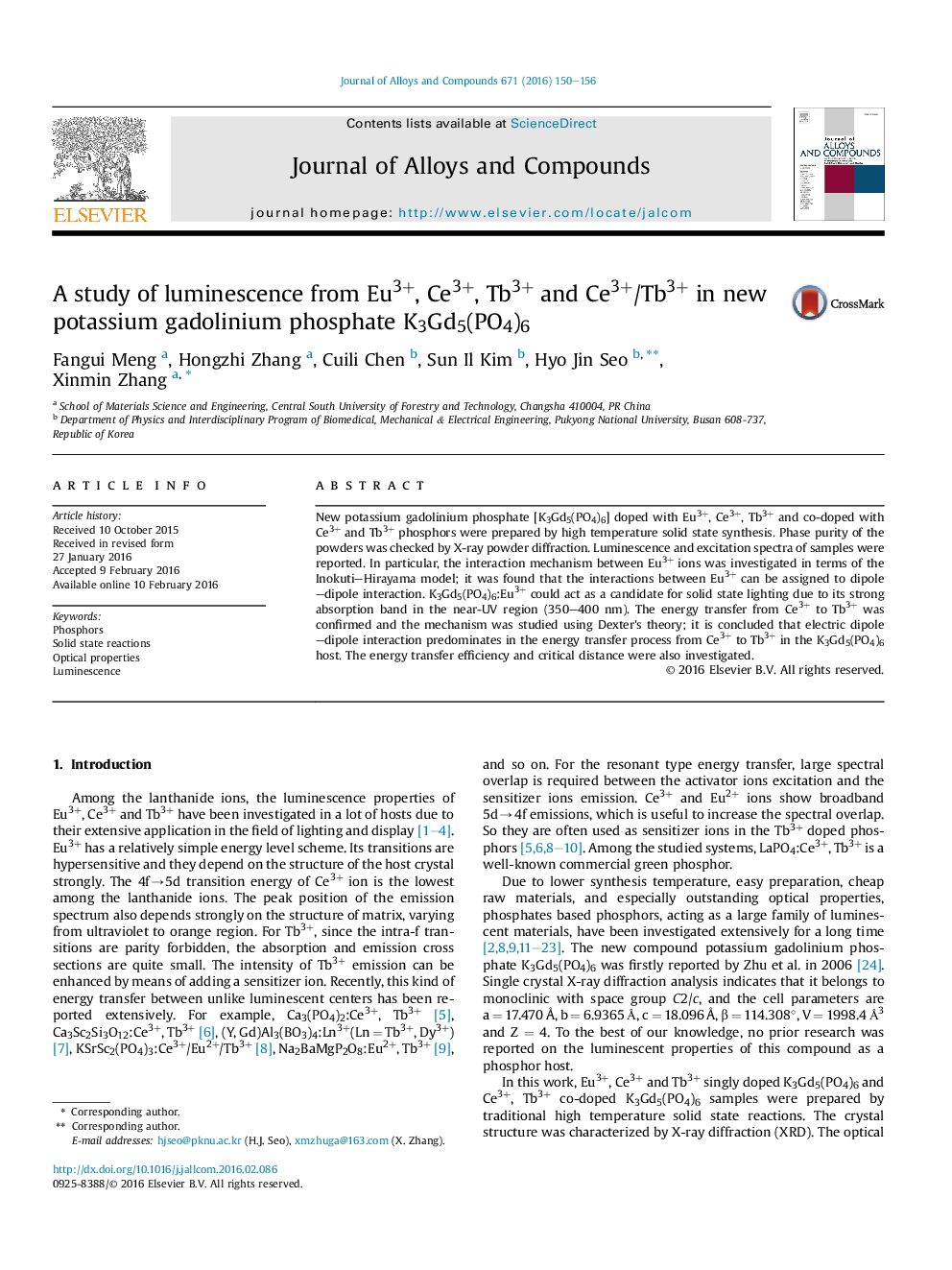| Article ID | Journal | Published Year | Pages | File Type |
|---|---|---|---|---|
| 1606026 | Journal of Alloys and Compounds | 2016 | 7 Pages |
•Optical properties of K3Gd5(PO4)6:RE3+ are investigated for the first time.•The interaction mechanism between Eu3+ ions is attributed to dipole–dipole type.•K3Eu5(PO4)6 is a candidate phosphor for application to solid state lighting.•There exists an efficient energy transfer from Ce3+ to Tb3+ (η is up to 95%).•The mechanism of energy transfer process is electric dipole–dipole interaction.
New potassium gadolinium phosphate [K3Gd5(PO4)6] doped with Eu3+, Ce3+, Tb3+ and co-doped with Ce3+ and Tb3+ phosphors were prepared by high temperature solid state synthesis. Phase purity of the powders was checked by X-ray powder diffraction. Luminescence and excitation spectra of samples were reported. In particular, the interaction mechanism between Eu3+ ions was investigated in terms of the Inokuti–Hirayama model; it was found that the interactions between Eu3+ can be assigned to dipole–dipole interaction. K3Gd5(PO4)6:Eu3+ could act as a candidate for solid state lighting due to its strong absorption band in the near-UV region (350–400 nm). The energy transfer from Ce3+ to Tb3+ was confirmed and the mechanism was studied using Dexter's theory; it is concluded that electric dipole–dipole interaction predominates in the energy transfer process from Ce3+ to Tb3+ in the K3Gd5(PO4)6 host. The energy transfer efficiency and critical distance were also investigated.
